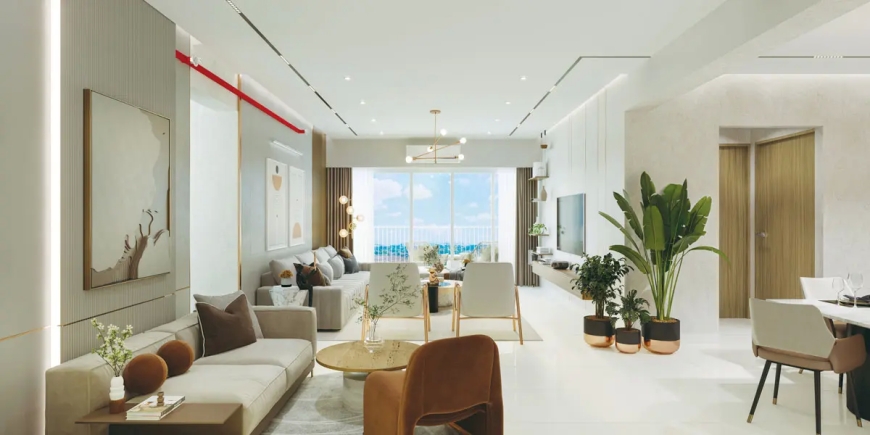How Thoughtful Design in Architecture Can Enhance Mental Health
According to the Centre for Urban Design and Mental Health (UD/MH), cities are associated with higher rates of most mental health problems compared to rural areas.

According to the Centre for Urban Design and Mental Health (UD/MH), cities are associated with higher rates of most mental health problems compared to rural areas: an almost 40% higher risk of depression, over 20% more of anxiety, and double the risk of Schizophrenia, in addition to loneliness, isolation and stress. In India, while we are beginning to see how urban design impacts physical health, only a handful of experts understand the links between mental health and our poorly designed cities.
With most of our lives spent indoors, the space we occupy has a major role in our psychological behaviour. Environmental psychology or Space psychology is, in fact, the interaction between people and the spaces they inhabit. Lighting, colours, configuration, scale, proportions, acoustics, and materials address the senses of the individual and generate a spectrum of feelings and practices.
Natural light and its psychological benefits
Natural light is a cornerstone of human-centric design. Research indicates that exposure to natural light regulates circadian rhythms, which are crucial for maintaining healthy sleep cycles. Poor sleep, in turn, is linked to anxiety, depression, and diminished cognitive performance. Daylight also stimulates serotonin production, enhancing mood and fostering a sense of well-being. Homes with abundant natural light create inviting living spaces that promote relaxation and improve occupants' overall mood. Large windows, glass doors leading to outdoor areas, and strategically placed skylights enhance the quality of life for residents.
Ventilation and air quality
Modern-day glass facade buildings, commonly found in urban landscapes, often prioritize aesthetics and energy efficiency over proper ventilation. These structures typically rely heavily on air-conditioning (AC) systems, with little to no provision for natural airflow or fresh air intake. As a result, indoor air quality (IAQ) in such buildings is often compromised, leading to a buildup of pollutants, dust, and allergens, which can exacerbate respiratory diseases.
Architects can improve ventilation through design strategies such as cross-ventilation, operable windows, and advanced HVAC systems. Incorporating biophilic design elements, such as indoor gardens or green walls, can also enhance air quality by filtering pollutants and increasing oxygen levels. Studies have shown that well-ventilated spaces reduce symptoms of sick building syndrome and contribute to a healthier, more focused environment.
Spatial design and emotional balance
Crowded, poorly designed spaces can lead to stress, irritability, and a sense of confinement. Conversely, open, well-structured spaces foster feelings of relaxation and freedom. The use of spatial zoning—creating distinct areas for work, relaxation, and social interaction—can help occupants maintain emotional balance.
Additionally, incorporating flexible spaces that adapt to diverse needs can enhance mental well-being. For example, adaptable spaces that transition between a home office and a relaxation zone can enhance mental well-being by offering flexibility and reducing stress.
The role of colour and texture
Although often overlooked, colour and texture significantly influence mental health. Cool colours such as blue and green are associated with calmness and relaxation, while warmer tones like yellow and orange evoke energy and positivity. Architects can strategically use colour to set the desired emotional tone in different spaces.
Textures also play a role in creating a sensory experience that impacts well-being. Natural materials like wood and stone evoke a sense of warmth and connection to nature, which can reduce stress levels. Incorporating tactile variety in interior finishes provides a sense of depth and engagement, contributing to a more enriching environment.
Biophilic design: Bringing nature indoors
Biophilic design is the integration of natural elements into built spaces, and has gained quite a bit of popularity as a strategy to enhance mental health. Features such as indoor plants, water elements, and natural materials create a connection to the natural world, which has been shown to reduce stress, improve focus, and boost overall well-being.
In residential spaces, incorporating biophilic elements such as balconies with greenery, vertical gardens, or large windows overlooking natural landscapes can create calming environments that support mental health. These designs foster a sense of tranquility and connection with nature, which positively impacts residents’ quality of life.
Architecture is more than a functional necessity; it is a framework that shapes human experiences and influences mental health. By prioritizing natural light, ventilation, spatial design, and biophilic elements, architects can create environments that promote well-being. The integration of thoughtful design principles has the potential to improve quality of life, making the built environment a catalyst for positive mental health outcomes. As the relationship between architecture and mental health continues to be explored, designing with purpose becomes not just an opportunity but a responsibility.








